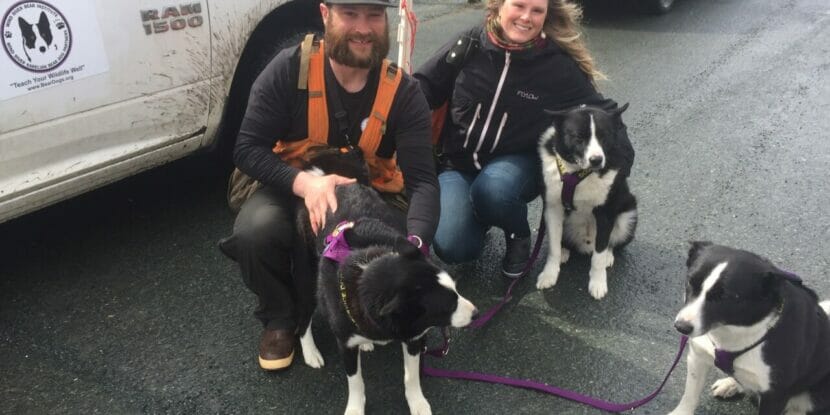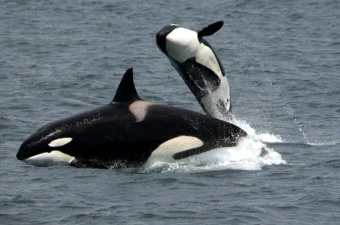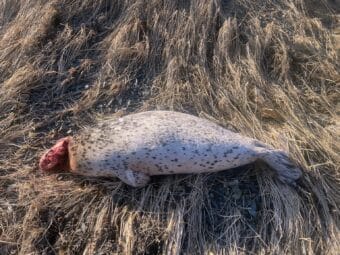
In 2020, The fish runs were small in the Chilkat Valley. The berry crop was, too. It was an especially difficult year for the Chilkat Valley’s bears. They resorted to feeding from trash, breaking into cars, some broke into homes. Close to fifty bears were shot.
Last week in Haines, the Takshanuk Watershed Council organized an event aimed to advance one conversation: how we can share our valley respectfully with our furry neighbors?
There were opportunities to practice using bear spray, discounts on electric fences, and talks by bear behavior experts. And three dogs traveled to the event from Fairbanks. They were there to teach the community a new trick.
“These are Karelian bear dogs,” said Nils Pedersen, the director of the Wind River Bear Institute. “It’s a primitive big game hunting dog from eastern Finland and western Russia. These dogs are traditionally used for hunting big game like moose and grizzly bears. So we are taking that instinct they have and using it for conservation.”
Pedersen’s organization has been working in the western U.S. and Japan to reduce conflict between humans and wildlife, and the dogs are their favored tool. Pedersen claims no person or dog has been harmed in the 27 years of the organization’s existence. And many bear lives have been saved.
Pedersen said the Wind River Bear Institute tries aims to change bear behavior. It uses many tools to chase bears away from trouble. The organization’s founder developed the original bear spray. Pedersen says he has used rubber bullets to chase bears. But the dogs are his silver bullet.
“I do think these dogs are the most versatile tool out there,” he said. “The dogs could be used to find the bears quickly in the dark, in areas of poor sight lines, using scent detection. What we can do is drive around with these dogs in the back of the truck, so they are going to sniff and bark when they smell a bear. Thereby we can cover a lot more ground and determine if that bear is in the area quickly and effectively.”
Once a bear has been located, Pedersen and his crew — ideally two people and two dogs — proceed to push the bear away.
“Getting between that bear and the area we want to defend, outnumbering it, stacking the odds against it,” he said. “We want these bears to know they can leave, they have to leave, and this is the way out.”
Some bears get the message fairly quickly. Others need to be reminded. Pedersen says some of his most important work is to teach sows to stay away from human activity.
“Cubs learn everything from their moms,” he said. “So we actually specialize in working with sows with cubs because they are the future of human-bear conflict. You have to be real careful and not ask them to do things that they aren’t able to do. You have to give them time. Cubs are often pretty pesky, you have to let mom manage them and put the pressure on them but allow her to do as she needs to do to get out of the situation that she is in.”
The Wind River Bear Institute breeds the bear dogs and provides training for handlers. This way, communities can develop their own wildlife K9 capacities. Pedersen says with well trained dogs and well trained handlers, it is possible to produce well trained bears.
“We almost never have aggression from bears,” he said. “We make it so easy for them to do the right thing. For folks who think we should be shooting every bear around, we can talk to them about other tools that we have at our disposal, like dogs. It just changes the conversation about bears.”
Bear tracks have recently been seen near the beach at the mouth of the Chilkat river. Bears are waking up from hibernation. Pedersen says the first thing we can do to keep bears safe is to deny them access to our food and secure our garbage.


